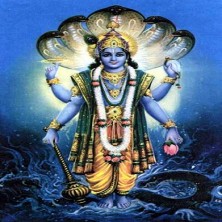Vaikunta Ekadesi
Venue : Chennai
Date : December 18, 2018 - December 18, 2018

Vaikunta Ekadashi is the Krishna paksha Ekadashi that occurs during the Dhanurmasa period in the Hindu calendar corresponding to late December - January in the English calendar. Vaishnavism believes that ‘Vaikunta Dwaram’ or ‘the gate to Lord's Inner Sanctum’ is opened on this day. Special prayers, yagnas and discourses are organised at temples on this auspicious day.
Legend
The significance of Vaikunta Ekadasi is mentioned in the 'Padma Purana'. During the Krita Yuga, also termed the golden age, an asura called Muran harassed both devas and mortals. Unable to bear his tyranny, the devas sought refuge in Shiva, who directed them to Lord Vishnu. A battle which lasted one thousand celestial years,ensued between Lord Vishnu and the demon and the Lord realised that a new weapon was needed to slay Muran.In order to rest and create a new weapon, the Lord retired to a cave called 'Himavati' in Badrikashrama. When Muran tried to slay the Lord in his sleep, the female energy that emerged from the Lord burnt him to ashes.Lord Vishnu who was pleased, named the female energy 'Ekadasi' and asked her to claim a boon. Ekadasi, instead beseeched the Lord saying "O Lord, if You are pleased with me and wish to give me a boon, then give me the power to deliver people from the greatest sins if they fast of this day". The Lord thus declared that people who observed a fast on that day and worshiped Ekadasi, would attain Vaikunta. Thus came into being the first Ekadasi, which was a Dhanurmasa sukla paksha ekadasi.
It is also said that on this day the ksheerasagara manthana (churning of the ocean) took place and the nectar of immortality (amritha) was distributed to the gods. This divine event is interpreted in the following manner. The ocean of milk is the human heart filled with satvic tendencies (kindness, purity and goodness). However, in all of us there exist both types of inclinations, good (devas) and bad (asuras). Only Sadhana or the churning process will throw out the poison in us and we can procure the sweet nectar, which will liberate us from the cycle of birth and death. Shaivaites call this day as Nanjunda Ekadasi, as it was on this day Shiva consumed nanju, the poison that emanated from the churning of the ocean. Some schools of thought believe that Sri Krishna gave the Gitopadesam to Arjuna on the day of Vaikunta Ekadasi.
Fasting & Significance
People fast the whole day and keep vigil. Special prayers are offered to Lord Vishnu and devotees engage in chanting and meditation. On 'Dasami', the previous day of the observance, devotees who take up Vaikunta Ekadasi fasting have lunch only. On Ekadasi, the next day, they maintain a complete fast and engage in prayers and meditation. That night, people keep vigil the whole night and visit the temple of Lord Vishnu, mostly in the wee hours of the morning.On this day, the Vaikunta Dwaram or the Swarga Vaasal, 'The Gates of Heaven' are believed to be kept open. The area encircling the sanctum is referred to Swarga Vaasal and devotees throng to gain entry into the temple, to seek blessings.For the Vaishnavas,it is a very holy day and should be ideally spent in fasting, prayer and meditation. Devotees look upon this austerity as a means to succeed in their spiritual endeavours. To them it is an activity which will increase their sankalpa (that which is beneficial to them), so as to avoid activities which are not beneficial to them (vikalpa). Such austerities make a student of spirituality enthusiastic, positive, serene and determined. They finally lead to the understanding that all activities must be only performed for the pleasure of the Lord. Austerity is indeed one of the four legs supporting religion, the other three being purity, mercy and truthfulness.
The demon Muran stands for the rajasic and tamasic qualities in people, which attributes to lust, passion, inertia, arrogance etc. When one conquers these tendencies, one attains the purity of mind, Sattva, indispensable for attaining moksha, liberation or realisation of the self.For realising the self as pure awareness, purity of mind is required. Fasting helps to keep tendencies at bay, which could be triggered by intake of certain food. Keeping vigil in the night is symbolic of awareness, or being watchful of the contents of the mind. When the mind is looked at, it becomes still. To abide in the stillness is to attain freedom or peace, acquired through merging of the mind with the self. This is symbolic of the mind automatically being absorbed at the sight of the Lord after the arduous fast and vigil.The belief that rice is prohibited, because Muran dwells in it, symbolically signifies the fact that eating of rice could get one feel heavy and hamper the vigil to be kept up. This signifies that entertaining negative tendencies could hamper one's progress towards awareness or consciousness.
PARTICIPATE IN THE PURUSHASUKTHA HOMAM TO BE PERFORMED ON VAIKUNTA EKADESI

